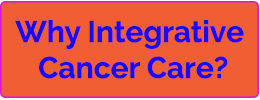“The social determinants of health are the conditions in which people are born, grow, live, work and age, including the health system. These circumstances are shaped by the distribution of money, power and resources at global, national and local levels, which are themselves influenced by policy choices. The social determinants of health are mostly responsible for health inequities – the unfair and avoidable differences in health status seen within and between countries.”
-World Health Organization
What are social disparities in cancer?
Social disparities in cancer are health inequities. Each person is not on a level playing field. Inequality is often associated with a lack of fairness and injustice. An unequal burden of suffering and death due to cancer continues in the United States and many parts of the world. Improved cancer prevention, treatment, outcomes, and survival are dependent on addressing inequities related to the disease1.
What are some areas of social inequality in cancer?
The following areas of social inequality exist alone and in combination involving adverse conditions and discrimination at multiple levels throughout life2. These factors influence outcomes when dealing with cancer as a patient or loved one, and supporting cancer risk reduction.
- Socioeconomic position (income, wealth, poverty, and debt)
- Work status and environment
- Insurance status
- Education
- Geographic location such as urban or rural
- Housing status
- Gender
- Age
- Race/ethnicity and racism
- Language
- Literacy
- Immigrant status
- Disability
- Sexuality
What are the multiple levels that impact inequality?
The many levels at which these factors exist and may be socially determined include the following and others. The specific components impacting each level influence health behaviors3.
Individual
Income, debt load, owning a car, resources for childcare, daily hassles, worries associated with living in disadvantaged situations
Interpersonal
Family roles and responsibilities, diversity of friendship patterns, availability of community members, social ties
Organizational
Work organization, job strain, occupational culture and norms, factors in the health care setting that facilitate access to care and effective communication with one’s physician
Neighborhood and community
Safe place to exercise, access to neighborhood resources such as fresh produce at reasonable prices, housing, transportation
Societal forces
Access to health care, access to education, public policy, discrimination
Culture
Any learned and shared knowledge, beliefs, and rules that people use to interpret experience and generate social behaviors such as social norms, social networks, and specific health behaviors





